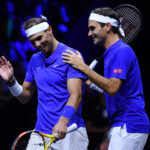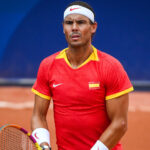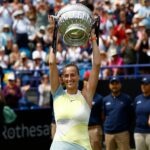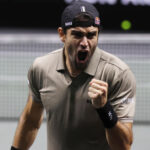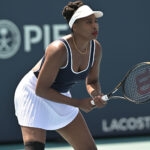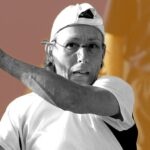Rafael Nadal loses in Davis Cup in what may be last ever match
The 38-year-old, who will retire after this weekend, was beaten 6-4, 6-4 by Botic van de Zandschulp
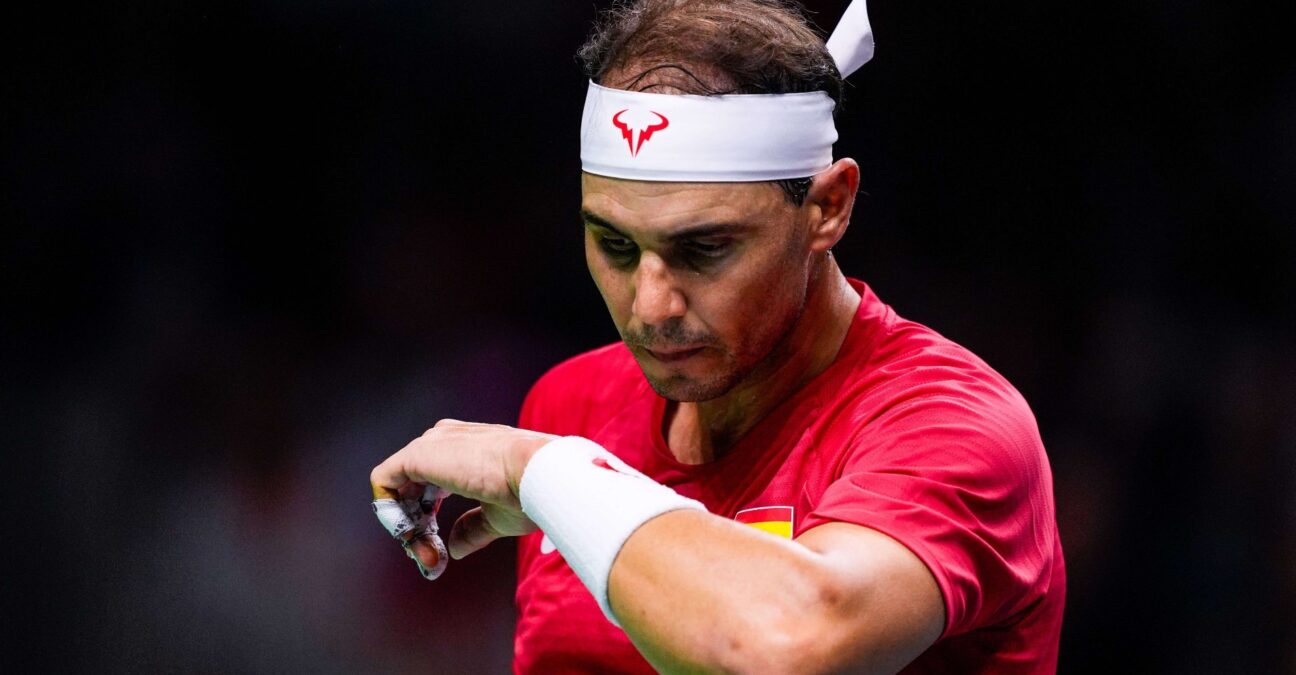 © Oscar J Barroso/AFP7/Shutterstoc/SIPA
© Oscar J Barroso/AFP7/Shutterstoc/SIPA
Rafael Nadal may have played his last ever match as a professional after he was beaten 6-4, 6-4 by Dutchman Botic van de Zandschulp in the Davis Cup quarter-finals in Malaga on Tuesday.
The 38-year-old Spaniard, who retires after the Finals, struggled for rhythm and Van de Zandschulp, who beat Carlos Alcaraz at the US Open, took advantage to give the Dutch a 1-0 lead.
The result ended a 32-match winning streak for Nadal in the Davis Cup but more importantly may prove to be the last match of a glorious career, in which he has won 14 French Open titles and 22 Grand Slam titles in all.
He received a standing ovation from the packed crowd after the match but now needs Alcaraz to beat Tallon Griekspoor to keep the match alive – and potentially offer Nadal another opportunity.
“At the beginning I think we were both nervous,” Van de Zandschulp said. “My first service game wasn’t very smooth. It’s tough to close out a match against him. At 4-3, 0-30 in the second set I just went for it and it worked.
“The crowd was unbelievable, I needed them (the Dutch fans). There were a few too many people from Spain cheering for him. It’s understandable, he’s the biggest sportsman here in Spain that’s ever lived, if I’d have been sitting in the stands I would have cheered for him too.”
Van de Zandschulp weathers early storm
Nadal was given a rapturous reception from the packed crowd but having not played since the Olympics, he was understandably rusty, which showed in too many uncharacteristic errors, his timing a little off on the relatively fast surface.
Van de Zandschulp looked nervous early on, too, with three double faults in his first service game betraying his feelings, but somehow he survived to hold on.
Nadal went into the match on a 29-match winning streak in singles for Spain and seemed to have the edge. At 4-3, 40-40, he was sniffing a break.
But Van de Zandschulp held on and then, in the next game, with Nadal again struggling to quite find the timing on his groundstrokes in particular, he rifled a backhand passing shot to gain the first break. Four points later, the set was the Dutchman’s, Nadal firing a backhand well wide.
Nadal fights back but too little too late
Nadal took a bathroom break before the start of the second set, probably as much to clear his head as anything else and one brilliant high backhand volley got the crowd going.
But the joy was short-lived. Struggling when the rallies went past the nine-shot mark – the opposite of what he had done throughout his career – Nadal tried to mix things up, serving and volleying, attacking the net when he could.
But a volley that caught the top of the net allowed Van de Zandschulp to hit another big backhand that Nadal could not control and then the Spaniard sent a forehand wide to hand Van De Zandschulp the break in the opening game.
At times, it seemed as if there were almost more Dutch fans in the stadium than there were Nadal supporters, one corner of the arena decked in orange. And they more than played their part as Van de Zandschulp continued to come up with some powerful ball-striking, often when Nadal least expected it.
At 2-1, back to back Van de Zandschulp double-faults saw him fall 0-30 behind but again he dug himself out a hole to extend his lead and two games later he grabbed a second break after Nadal missed a sitter of a forehand volley.
True to form, though, Nadal wasn’t done, grabbing one break back for 4-2 after a marathon game and then holding easily to cut the deficit. At 0-30, after another double fault, Van de Zandschulp looked decidedly shaky but he hit three aces to get himself out of trouble.
Two games later, with all the pressure on his shoulders, Van de Zanschulp held his nerve to serve out for one of the biggest wins of his career, perhaps the final shot of Nadal’s career a sliced forehand at full stretch that fell short and into the net.
